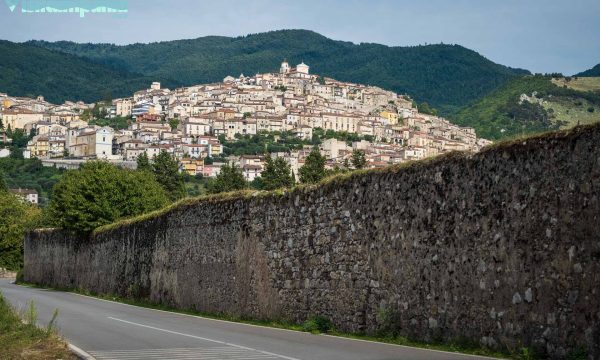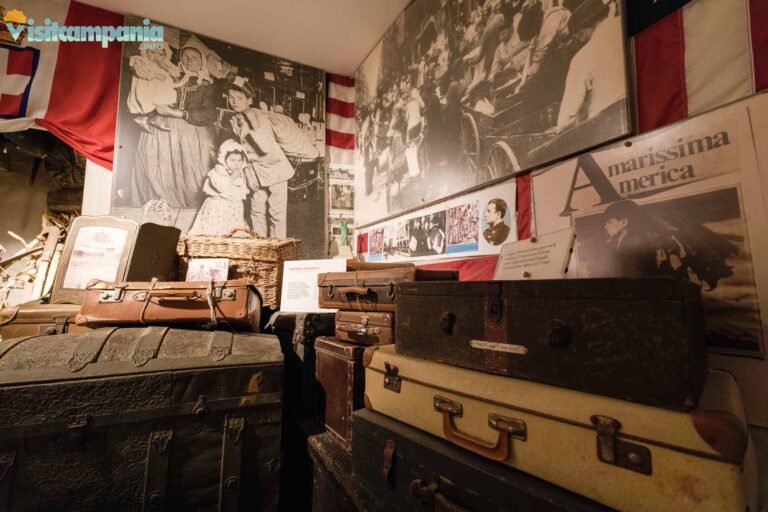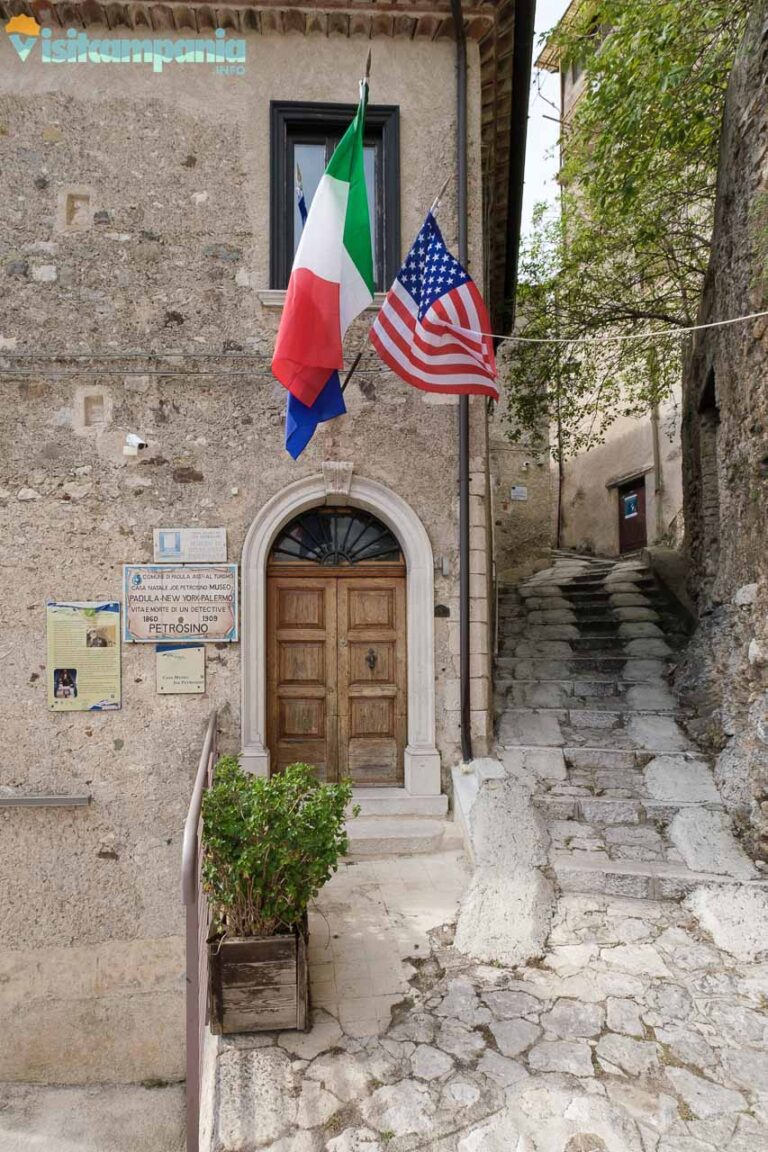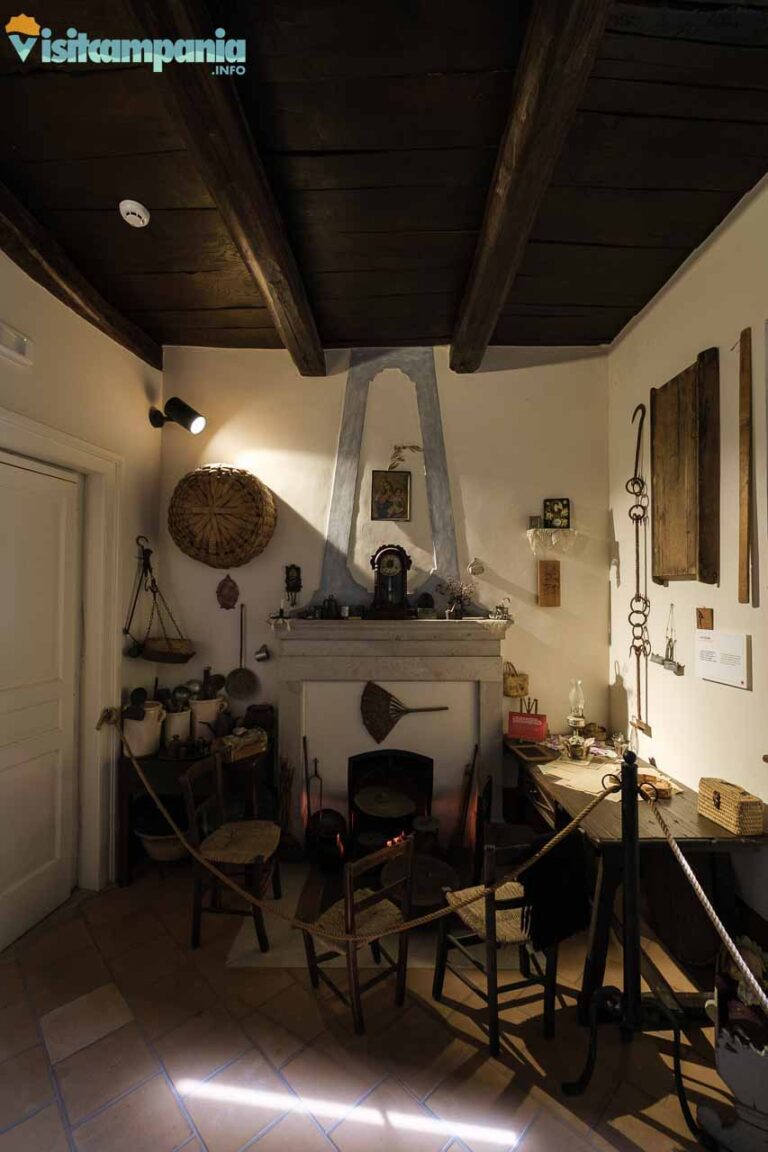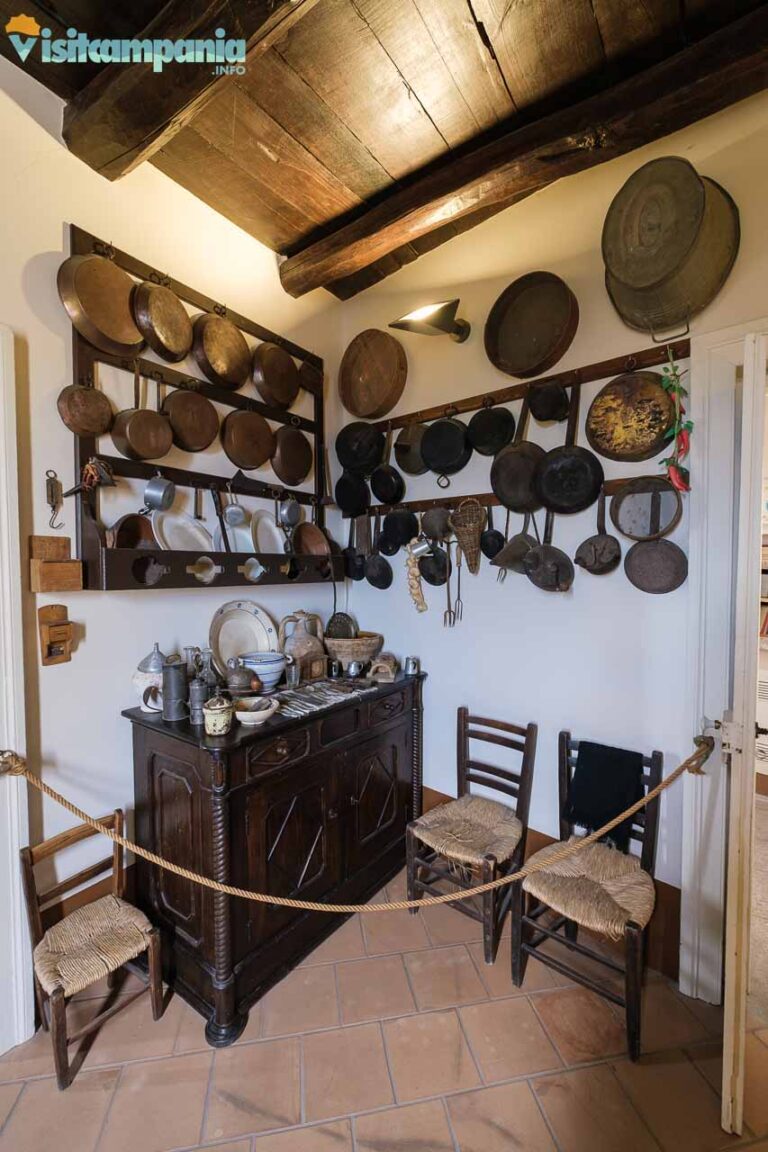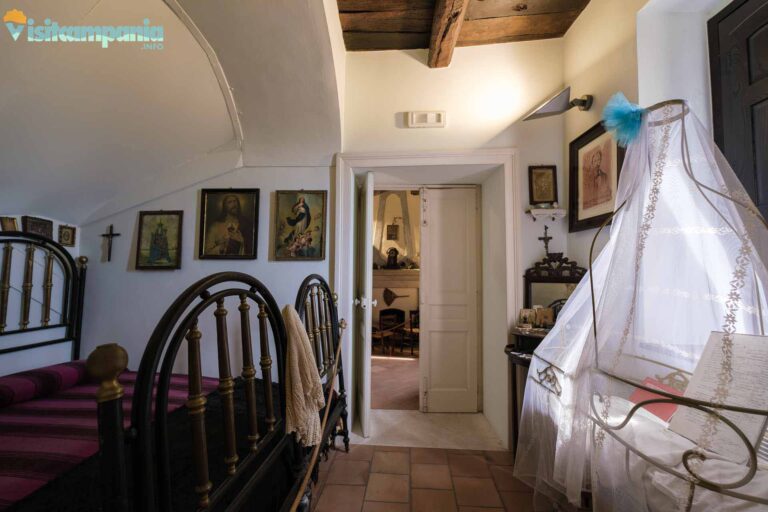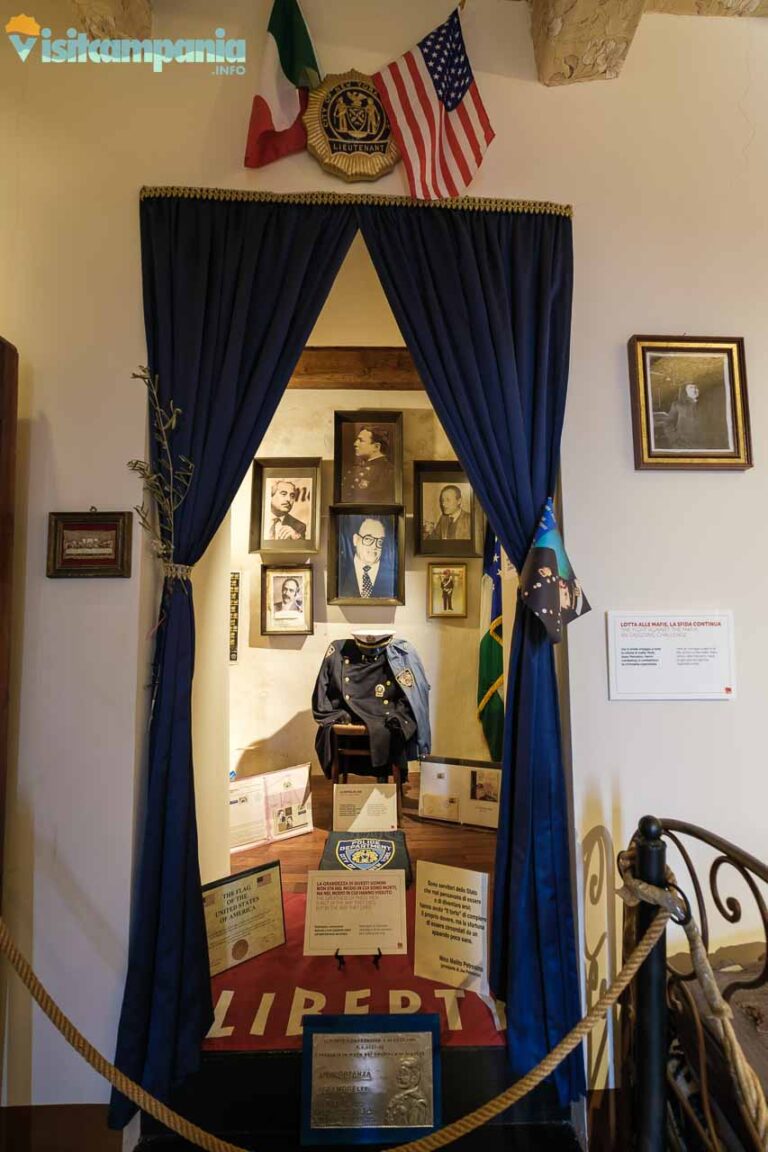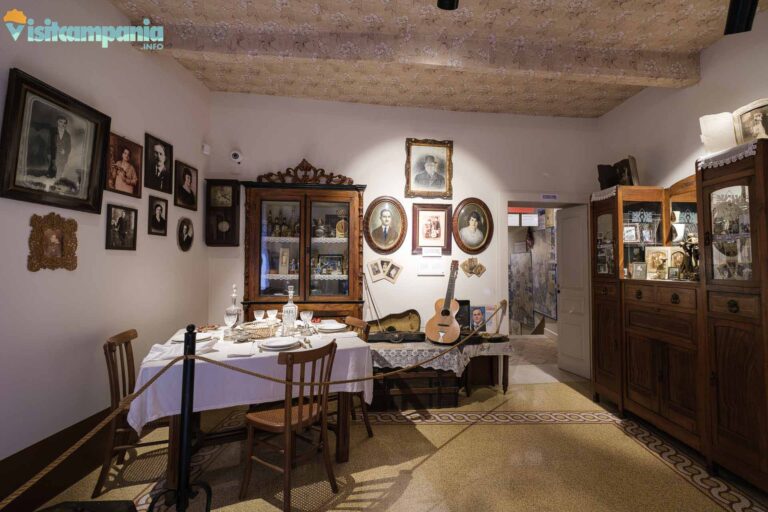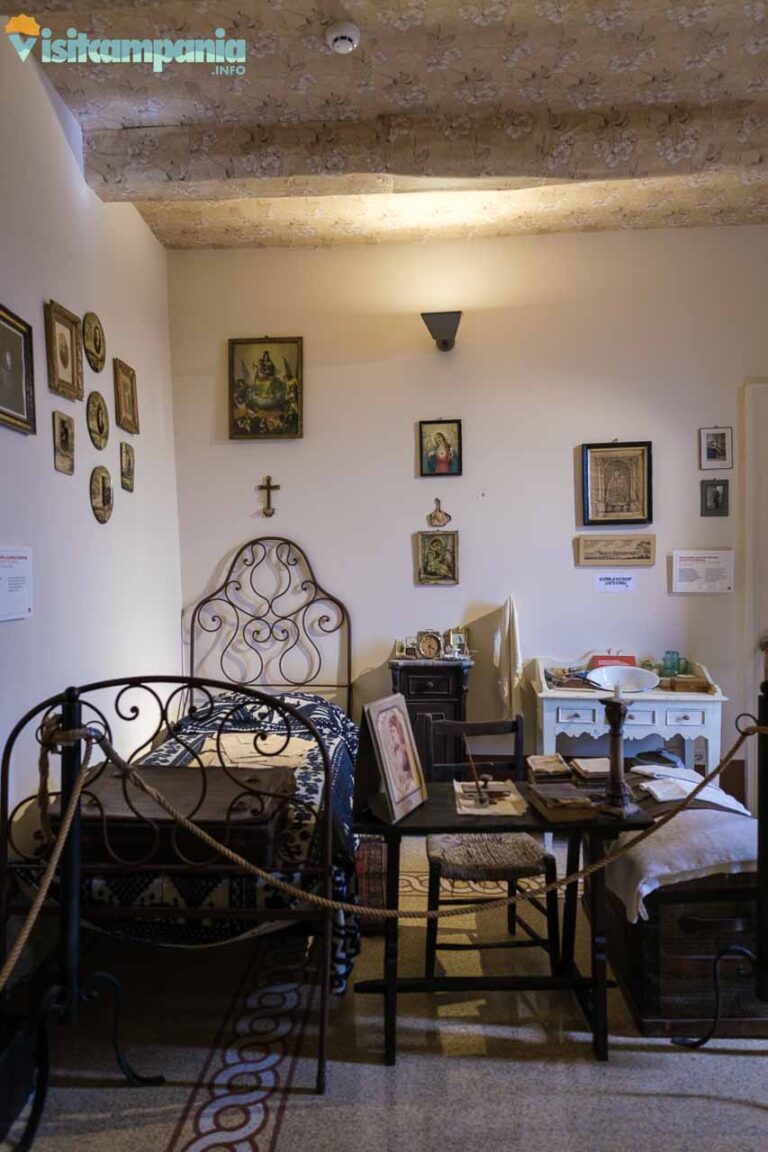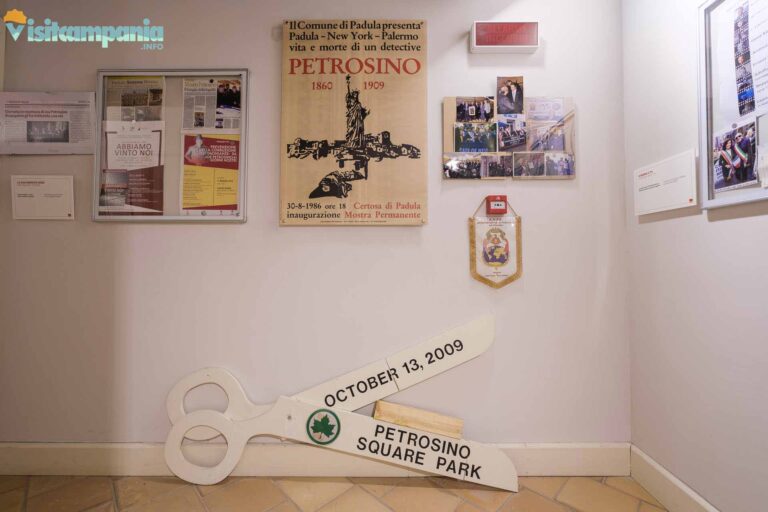What is Joe Petrosino’s House Museum
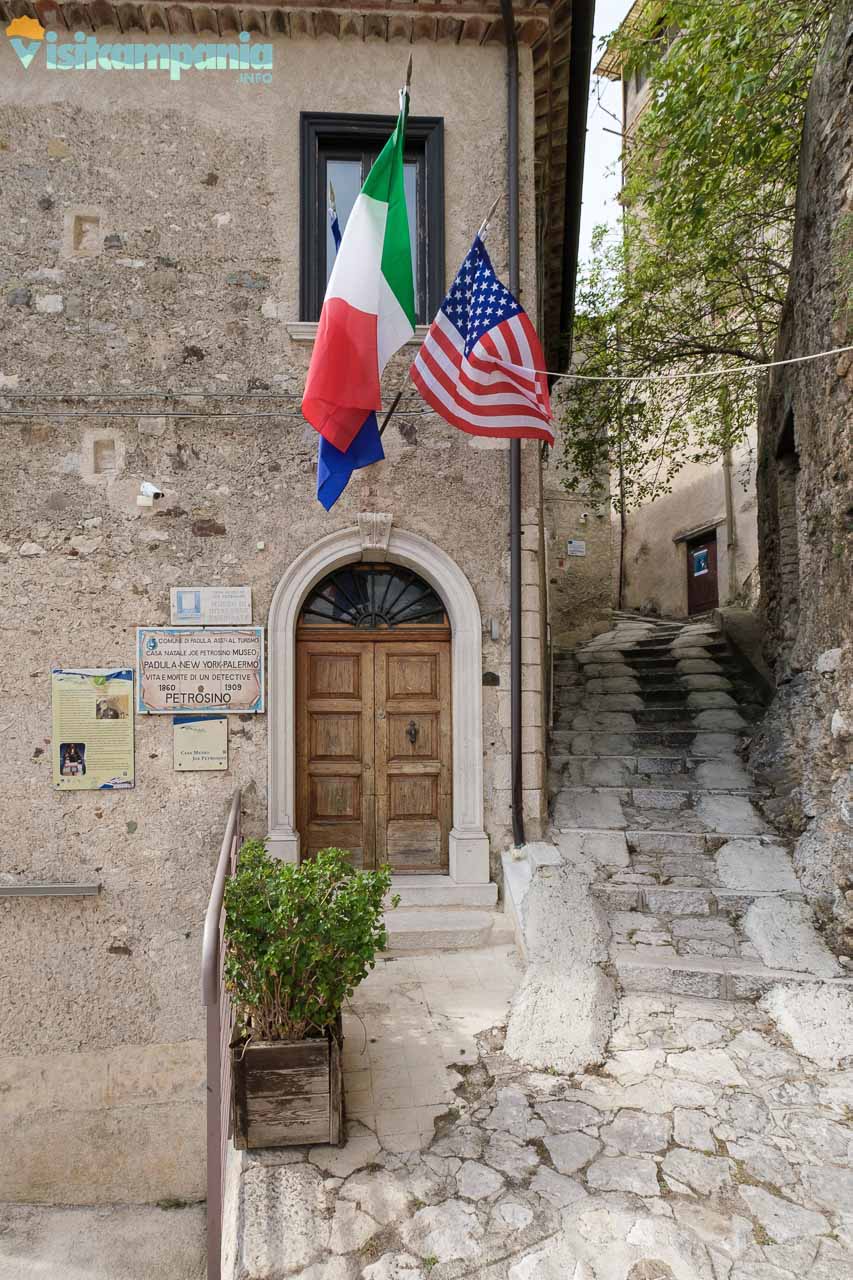
The Joe Petrosino House Museum , located in his birthplace in Padula , is the only museum in Italy dedicated to a representative of the police force. The museum celebrates his life and courage, exhibiting memorabilia and documents related to his career .
Giuseppe “Joe” Petrosino, born on August 30, 1860, lived here until the age of 13, before emigrating to New York with his family in 1873. Having become a famous Italian-American policeman , he returned to Italy to investigate the links between the American and Sicilian mafia, but was assassinated in Palermo on March 12, 1909 during his mission.
What to see in Joe Petrosino’s house museum
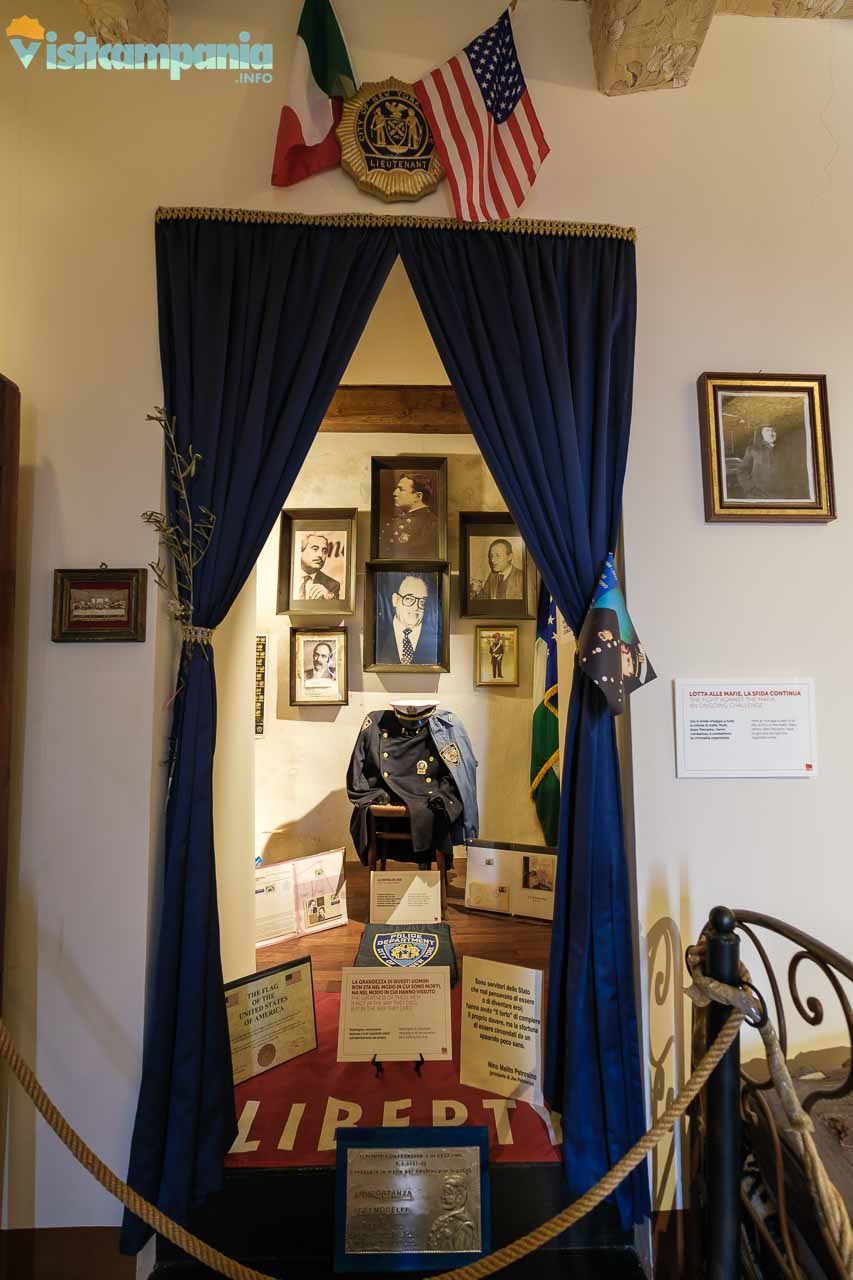
The house, still cared for today by Petrosino’s descendants, retains nearly intact period furnishings and objects , offering an authentic glimpse into Joe’s family history and southern emigration.
The exhibition traces the history from 1860 to today , with a focus on legality, justice and emigration .
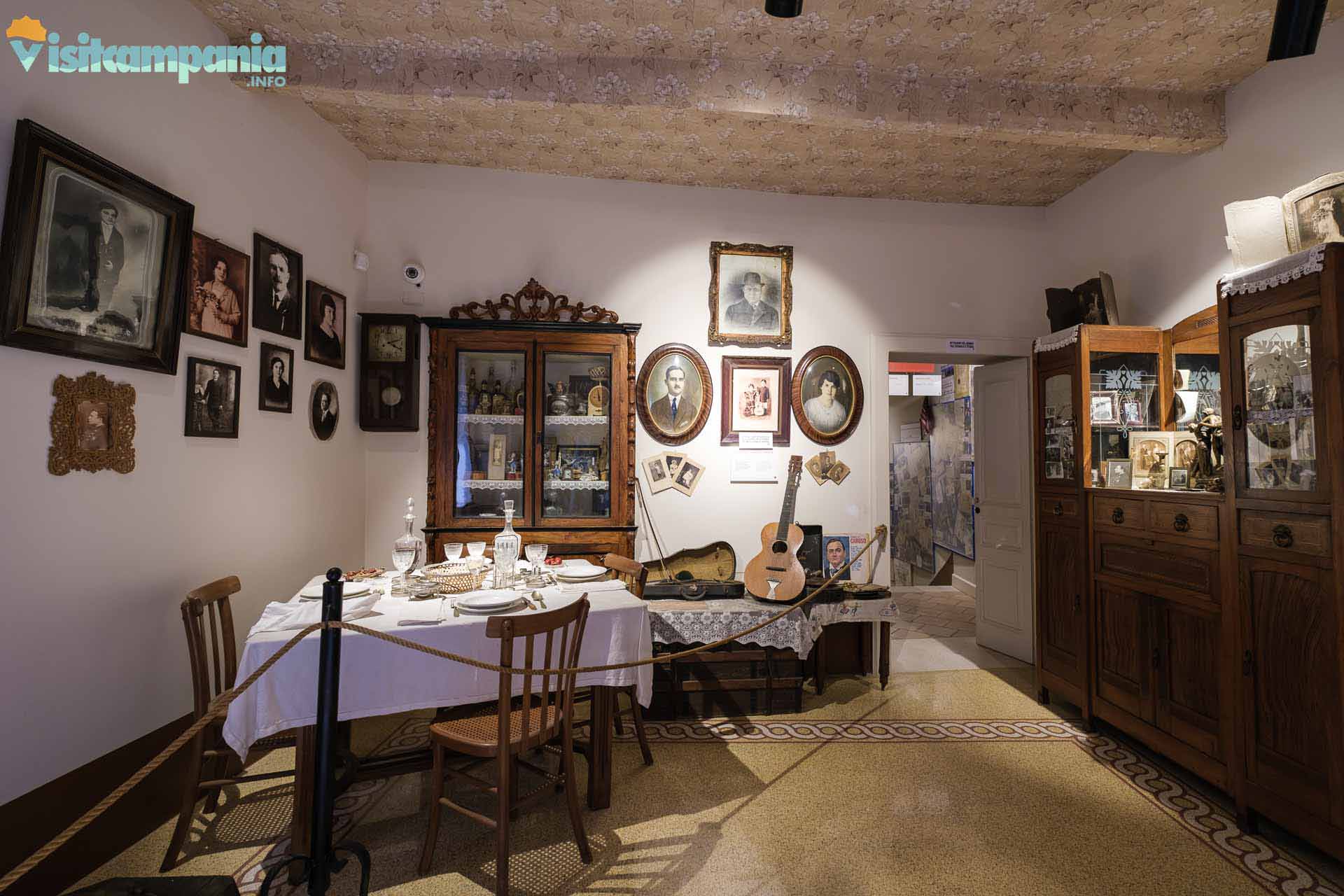
Among the rooms that can be visited are the kitchen , still furnished as it was in Joe’s time and built around the fireplace, the bedroom with the baby’s cradle, personal objects and original photographs, and the dining room , furnished in Art Nouveau style with the table set with family dishes and monogrammed napkins.
Paintings and photographs on the walls tell the story of generations of Petrosinos , also documenting the success of returning emigrants.
The building also features an innovative multimedia section that explores Petrosino’s pioneering role in the fight against the Mafia, with original footage, archive documents and contemporary chronicles.
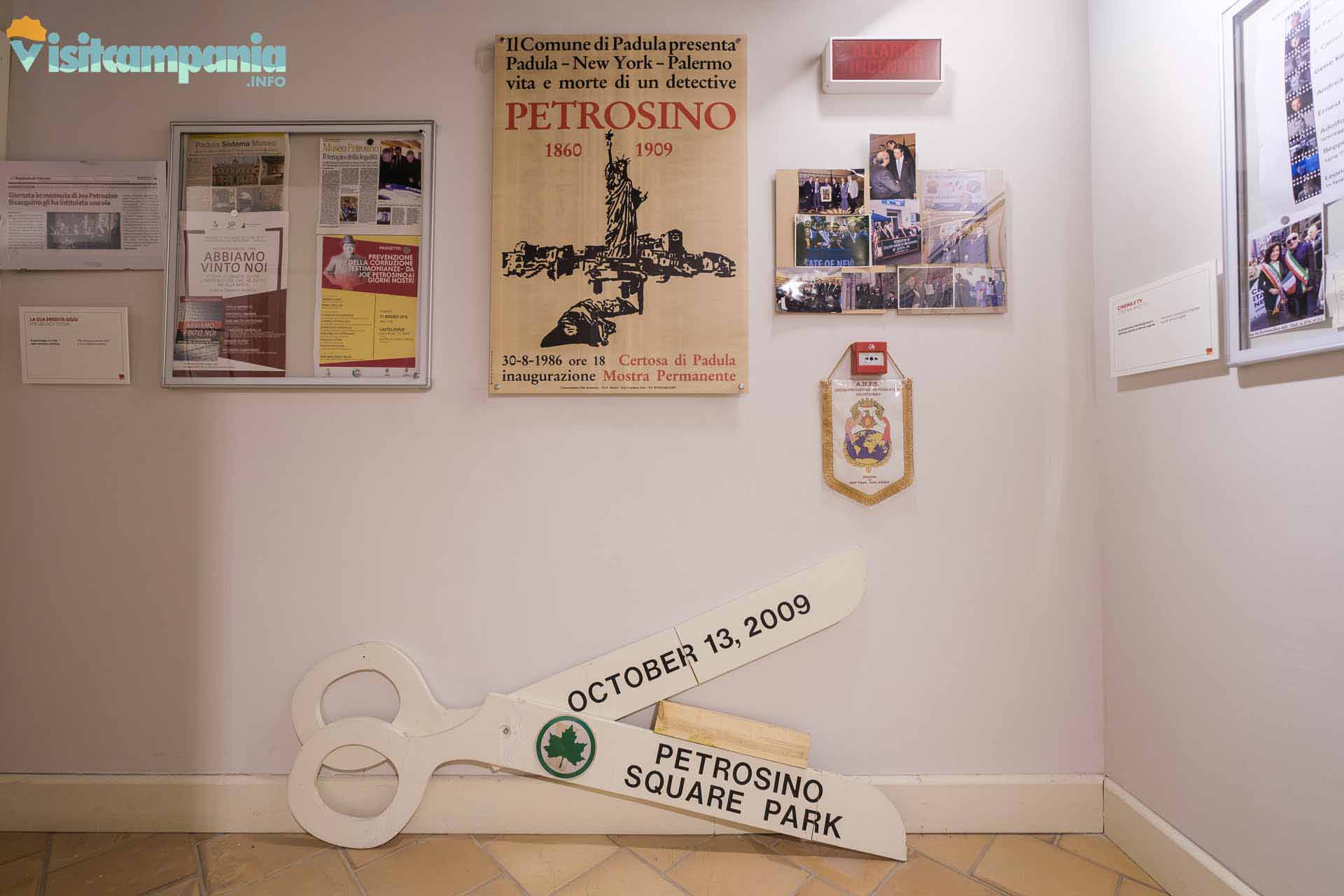
Finally, to accompany you in the discovery of such a fascinating place you will find Nino Melito Petrosino , great-grandson of Joe Petrosino , the first official guide and today also coordinator of the other guides. It is above all thanks to his work and his passion that today the house museum is open to the public . Nino and his collaborators enrich the visit with engaging narratives, transmitting to the visitor values of legality and justice and a sense of authentic welcome . In this way, you immerse yourself not only in a museum environment but, above all, in a community that despite difficulties and emigration still resists with pride and tenacity. An exciting visit that brings to life the stories of those who have inhabited these spaces, celebrating the legacy of a timeless hero and a resilient community .
Who was Joe Petrosino
Early Years and Emigration to America
Giuseppe “Joe” Petrosino was born on August 30, 1860, in Padula , in the province of Salerno. In 1873, his family emigrated to New York , settling in Little Italy. An enterprising young man, Joe worked as a newsboy and shoeshine boy to support his family. In 1878, he was hired as a street cleaner by the city of New York.
In 1883 he joined the New York Police Department , distinguishing himself for his determination and investigative skills. Being the only Italian policeman, he faced prejudice from both his colleagues and the Italian community. However, his dedication made him respected and feared, to the point that the code phrase “oggi Petrosino ind’ ‘a minestra” was used to signal his presence in the neighborhood, playing on the meaning of “petrusino” which in Sicilian dialect, but also in Neapolitan, means parsley.
The fight against the mafia
A crucial moment in Petrosino’s career was the support of Theodore Roosevelt, then commissioner of police and future president of the United States. In 1895, thanks to Roosevelt’s trust, Petrosino was promoted to sergeant and was able to devote himself entirely to investigations. His knowledge of the Italian language and culture allowed him to effectively infiltrate criminal organizations, fighting the Black Hand and other illicit activities that threatened the Italian-American community.
In 1905, Petrosino was promoted to lieutenant and given the task of organizing the Italian Branch , a special squad of Italian police officers. Under his leadership, the unit achieved notable successes, including protecting tenor Enrico Caruso from Mafia threats. Petrosino was known for his uncompromising approach to crime and his use of innovative investigative techniques, many of which are still in use today.
In 1909, while on a secret mission to Italy to gather intelligence to counter transatlantic Mafia activity, a leak compromised his cover. On March 12, 1909, in Palermo, Petrosino was assassinated in Piazza Marina . His death sparked outrage in both Italy and the United States, and his funeral in New York was attended by an estimated 250,000 people .
The instigator and the executor of the murder
The murder of Joe Petrosino is one of the most iconic crimes in the history of the Mafia , a symbol of the impunity and complexity of transatlantic criminal networks. His death highlights the challenges faced in the fight against organized crime and the pervasive influence it exerted and still exerts on both sides of the Atlantic.
Investigations at the time suggested that the murder had been orchestrated by leading figures in the Italian-American underworld . It was speculated that Giuseppe “Piddu” Morello and Giuseppe Fontana, affiliated with the American Cosa Nostra, had instructed Sicilian boss Vito Cascio Ferro to eliminate Petrosino. When he was arrested, Cascio Ferro was found with a photograph of Petrosino, but an alibi provided by a friendly deputy cleared him . Nonetheless, the police commissioner of Palermo, Baldassarre Ceola, charged 14 people with complicity in the murder. However, due to lack of evidence, all the suspects were acquitted, leaving the case unsolved .
Years later, Prefect Cesare Mori arrested Vito Cascio Ferro , who was sentenced to life in prison for another murder. During a prison interview, Cascio Ferro stated that he had killed only one man in his life in a “disinterested” manner, implying a reference to Petrosino. In 2014 , wiretaps conducted as part of the Palermo Guardia di Finanza’s Operation Apocalypse seemed to confirm this hypothesis. Domenico Palazzotto, a descendant of Paolo Palazzotto , was intercepted while claiming that his great-uncle had killed Petrosino on behalf of Cascio Ferro. These revelations strengthen the hypothesis of a direct involvement of the Sicilian and New York mafia in Petrosino’s assassination, even if the case remains officially unsolved .
Joe Petrosino in art and culture
Literature and comics
The figure of Joe Petrosino has inspired a vast literary production . In 1909, the Verlagshaus für Volksliteratur und Kunst published a first popular novel in Germany , followed between 1910 and 1911 by a work in installments attributed to Ferdinand Laven. In the United States , the publishing house Eichler included Petrosino in the Nick Carter stories. In France , Ferenczy published a fictionalized biography in 1912.
In Italy , Guglielmo Stocco wrote Giuseppe Petrosino: The Terror of the Black Hand ( 1912 ), while Arrigo Petacco published the biographical novel Joe Petrosino in 1972. Secondo Signoroni also wrote several detective novels inspired by his figure. More recent works include Onofrio Catacchio’s The Black Hand ( 2017 ), Stephan Talty’s book The Black Hand – The True Story of Joe Petrosino ( 2017 ), and Salvo Toscano’s novels ( 2019, 2022 ).
Finally, between 1938 and 1939 , the Florentine publisher Mario Nerbini published a comic strip about Petrosino in the magazine L’Avventuroso , while in 2017 Sergio Bonelli Editore dedicated an issue to him in the Le storie series .
Cinema and television
Petrosino has been the subject of several adaptations . In 1909, a documentary was released about his funeral. Films dedicated to his story include Pay or Die ( 1960 ) and The Black Hand ( 1973 ). Italian television produced the miniseries Joe Petrosino in 1972 , starring Adolfo Celi, and another in 2006 starring Giuseppe Fiorello . His story was also remembered in Squadra antimafia .
Theater
The theatre paid homage to Petrosino with the monologue by Alessandro Fortarezza ( 2016 ) and the anti-mafia puppet show by Angelo Sicilia ( 2018-2019 ).

